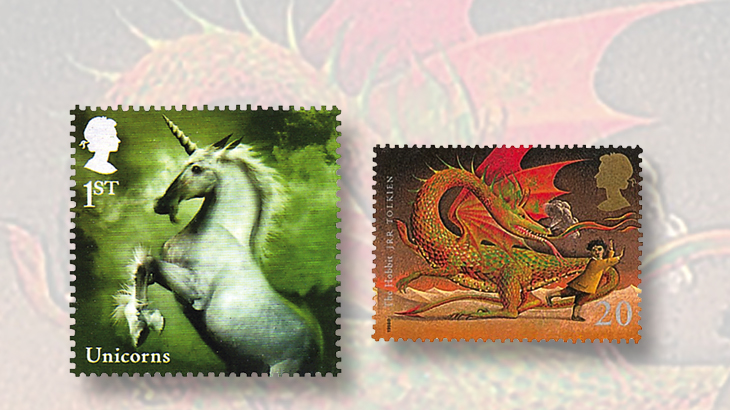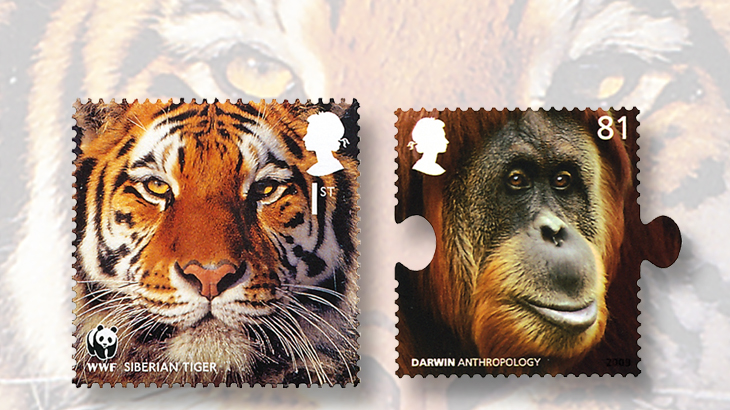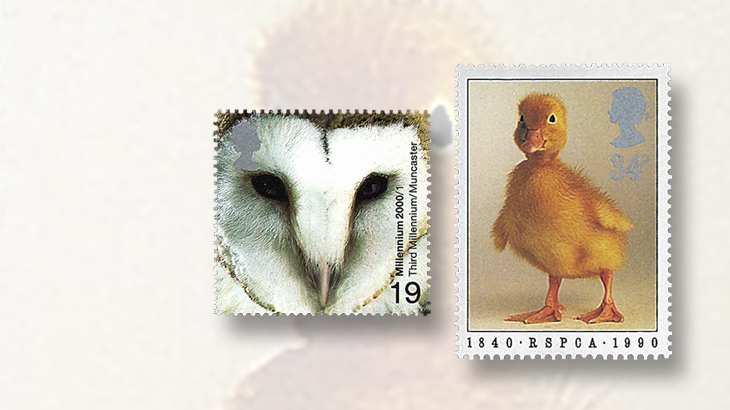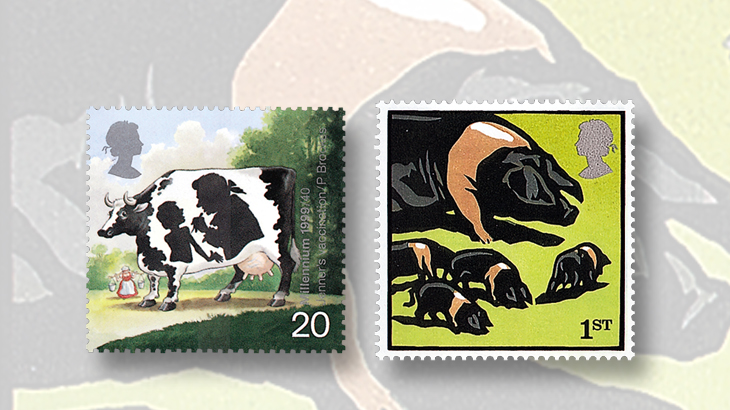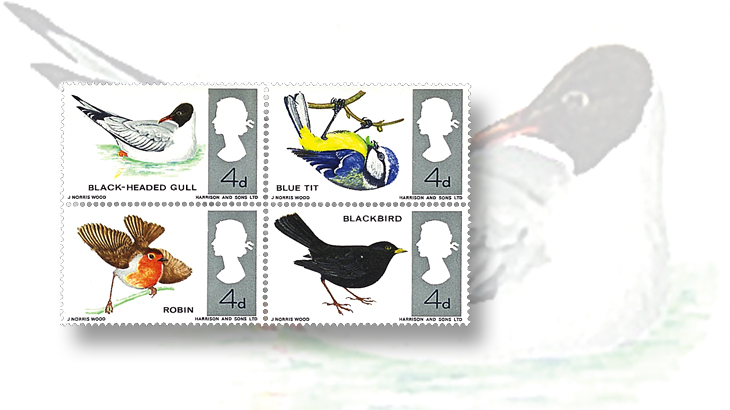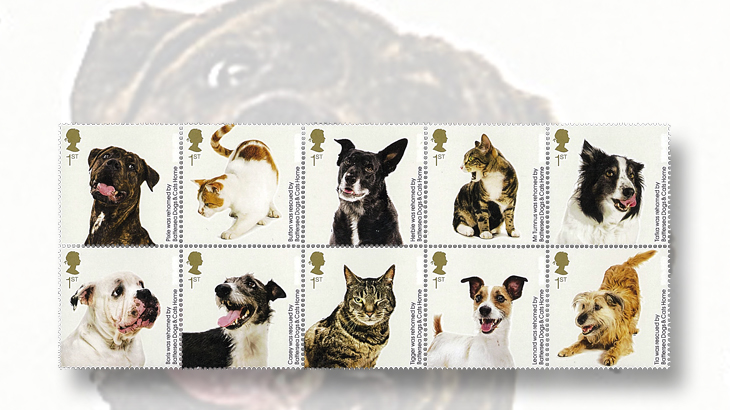World Stamps
Identifying animals pictured on Britain’s stamps is child’s play
By David Alderfer
If there is a 2-year-old toddler in your life, you might create a future stamp collector by using stamps of Great Britain to play a game of identify the animals.
Great Britain has issued more stamps depicting animals than you likely realize.
Cats and dogs abound on British commemoratives. An issue in 2010 marking the 150th anniversary of the Battersea Dogs and Cats Home shows 10 different cats and dogs in a se-tenant block (Scott 2757-2766).
Connect with Linn's Stamp News:
Like us on Facebook
Follow us on Twitter
Keep up with us on Instagram
The home is a charity dedicated to animal welfare and makes abandoned and abused animals available for adoption.
If you show these stamps to a young child and ask, “What are these animals?” you are likely to get a quick reply, “Dogs and cats.”
Cats and dogs are usually the first animals that children learn to identify, but you also can find other common household pets pictured on Great Britain stamps.
Moving to the category of farm animals, there are plenty to choose from, including stamps showing cows and pigs.
For example, a black-and-white cow is pictured on one of the stamps in the 1999 millennium series honoring British achievements of the past 1,000 years. This 20-penny stamp commemorates the first smallpox vaccinations developed by Edward Jenner (Scott 1847).
In 2005, Britain’s Royal Mail issued a set of 10 Farm Animals stamps (Scott 2251-2260). In addition to a pig and a cow, there are images of horses, ducks, chicks, sheep, a goat, turkeys, and a dog in this se-tenant block of 10.
More exotic animals can, of course, be found at the zoo. Children enjoy visiting zoos and learning about animals they know about from picture books and stories that have been read to them. Examples include tigers and orangutans.
A Siberian tiger (Scott 2885) is pictured on a stamp issued in 2011 to recognize the World Wildlife Fund’s efforts to safeguard wild animals from extinction.
The WWF issue also includes easily recognizable images of an elephant, a gorilla, a polar bear, and a rhinoceros.
An orangutan was part of a 2009 issue related to Charles Darwin (Scott 2632, 2638).
At some point in their development, many children believe in imaginary animals, such as unicorns and dragons. Britain has printed its share of make-believe animals on stamps.
A unicorn was included in the 2009 Mythical Creatures set of six (Scott 2673-2678).
A dragon was among the other mythical creatures featured in the set. Another dragon can be found on the 20-penny denomination (Scott 1820) in a 1998 set of five stamps illustrating magical creatures from children’s fantasy novels. In the case of the dragon, the novel is The Hobbit by J. R. R. Tolkien.
As a traditional national symbol for the country of Wales, the dragon has appeared on many British stamps, especially definitives. However, the dragon’s design often is highly stylized and might not be immediately recognizable to a young child.
Britain also has issued many stamps featuring birds. One of my favorites is this se-tenant block of four from 1969 (Scott 461-464).
Two more of my favorite animal stamps of Great Britain show a barn owl (Scott 1890) and a duckling (1302).
The Barn Owl stamp was issued in 2000 as part of the series promoting Millennium Projects, and the Duckling stamp is part of a 1990 set of four celebrating the 150th anniversary of the Royal Society for the Prevention of Cruelty to Animals.
On May 17, Royal Mail intends to issue a new set of 10 stamps it is calling “Animail,” an intentional corrupted spelling playing on the word animal. Royal Mail has not yet announced what specific animals will be depicted.
Great Britain has issued a wealth of stamps that picture animals. Sitting down with a child, grandchild, niece or nephew and identifying the animals found on these stamps is a fun game. It also might be a spark to forming a future stamp collector.
MORE RELATED ARTICLES
Headlines
-
US Stamps
Oct 7, 2024, 3 PMMcMurtrie dismissed as APS education director following Sept. 21 arrest
-
US Stamps
Oct 7, 2024, 12 PMVasiliauskas named president of Mystic Stamp Co.
-
US Stamps
Oct 6, 2024, 5 PMApgar souvenir card available
-
US Stamps
Oct 6, 2024, 4 PMFirst Continental Congress and U.N. stamps receive Scott catalog numbers
